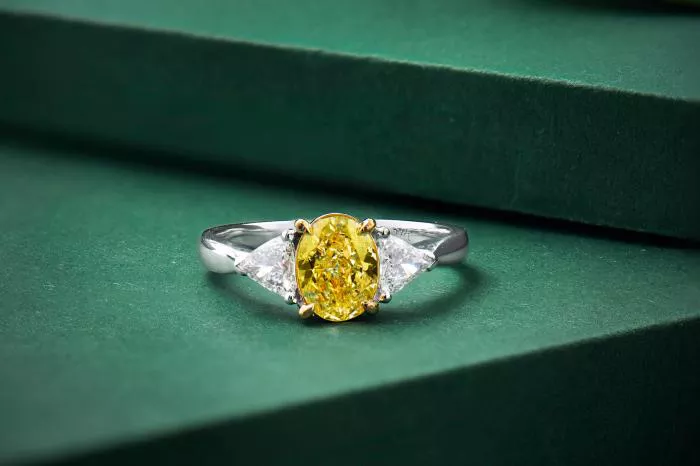Yellow diamonds have become increasingly popular in recent years. Their vibrant color and unique beauty attract many buyers. However, with popularity comes the risk of counterfeit stones. Knowing how to identify a real yellow diamond is essential for any buyer. This guide outlines key factors to consider when assessing the authenticity of yellow diamonds.
Understanding Yellow Diamonds
Yellow diamonds are a type of fancy diamond. They get their color from nitrogen impurities in the carbon structure. This gives them a warm yellow hue. The intensity of the yellow can vary. Some stones are light yellow, while others are vivid. The grading system for yellow diamonds includes different categories based on their color saturation. Understanding these categories helps in evaluating the quality of the stone.
The Importance of Certification
When buying a yellow diamond, always check for certification. A reputable gemological laboratory should provide a grading report. This report confirms the diamond’s authenticity and details its characteristics. Look for certificates from organizations like the Gemological Institute of America (GIA) or the American Gem Society (AGS). These institutions follow strict grading standards and offer reliable assessments.
Visual Inspection
A visual inspection is a great first step in identifying a real yellow diamond. Look closely at the diamond’s color. Real yellow diamonds have a consistent and vibrant hue. Fake diamonds, such as cubic zirconia or synthetic stones, may show uneven color distribution.
Checking for Bubbles
One easy way to spot a fake diamond is to check for bubbles. Real diamonds are crystalline and do not have bubbles. If you notice small bubbles in the stone, it is likely a synthetic material. Use a magnifying glass or jeweler’s loupe for a closer look. Inspecting the stone under magnification can reveal many clues.
The Refractive Index
Diamonds have a high refractive index, which gives them their sparkle. A real yellow diamond will reflect light differently than a fake one. You can test this by observing how the diamond interacts with light. If it has a lot of brilliance and fire, it is likely real.
The Fog Test
The fog test is a simple method to check a diamond’s authenticity. Breathe gently on the diamond. If it fogs up and clears quickly, it is likely real. Diamonds dissipate heat quickly. If the fog lingers, the stone may be a fake.
The Scratch Test
While not the most recommended method, the scratch test can be informative. Real diamonds are the hardest natural material and can scratch glass. If you gently scratch the surface of glass with the diamond, it should leave a mark. However, be cautious; this test may damage the diamond.
Comparing with Other Stones
When unsure about a yellow diamond, compare it with other stones. Hold the yellow diamond next to a similar-sized cubic zirconia or moissanite. Observe the differences in brilliance and color. Real yellow diamonds typically exhibit more sparkle and depth.
Color Grading
As mentioned, yellow diamonds are graded based on their color intensity. The grading scale ranges from light to fancy vivid. Understanding this scale is crucial when assessing a diamond. A real yellow diamond should have clear, defined color characteristics. Check the certificate for its color grade.
Cut Quality
The cut of a diamond significantly affects its overall appearance. A well-cut yellow diamond will have more brilliance and fire. Poorly cut diamonds can appear dull, even if they are real. Look for a diamond with a good cut grade. The cut should enhance the diamond’s color and sparkle.
Evaluating Clarity
Clarity refers to the presence of internal or external flaws in the diamond. Real diamonds usually have some inclusions. However, yellow diamonds may hide these flaws better due to their color. Examine the diamond closely for any visible inclusions. If it appears flawless, ask for further testing.
Price Considerations
When buying a yellow diamond, consider the price. Real yellow diamonds can be quite expensive. If a deal seems too good to be true, it probably is. Research the market price for similar stones. This will give you a benchmark for evaluating any potential purchase.
The Role of a Professional Jeweler
If you are still unsure about the authenticity of a yellow diamond, consult a professional jeweler. A qualified jeweler can provide a more thorough evaluation. They will have the tools and experience to assess the diamond accurately. Always choose a jeweler with a solid reputation and good reviews.
See also: What Do Garnets Symbolize
Conclusion
Identifying a real yellow diamond requires careful attention to detail. Start with visual inspections and consider professional certification. Use tests like the fog test or scratch test to gather more information. Remember to evaluate the diamond’s cut, clarity, and color grading. If in doubt, consult a reputable jeweler.
In a market filled with imitations, knowing how to spot a real yellow diamond is essential. With the right knowledge and tools, you can confidently make your purchase. Whether you’re looking for an engagement ring or a unique piece of jewelry, understanding these factors will help you find a beautiful and authentic yellow diamond.
Related topics:

